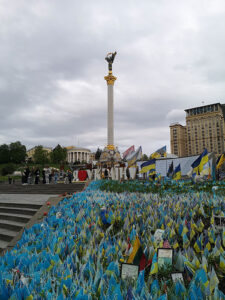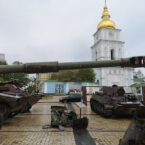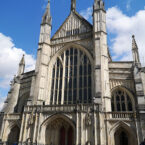Lonsky Prison Museum and Territory of Terror are two museums in Lviv which should be visited by anyone who goes to Ukraine. I was so impressed, as a historian, by how Ukrainians decided to commemorate their recent past. I’ll talk about both in the same post because they are quite emotionally draining to see and are related in dealing with the darker history. I also think both should be visited to better understand the 20th century in Ukraine. They take about an hour to see, each, maybe a bit more, depending on how much time one spends reading the display boards.
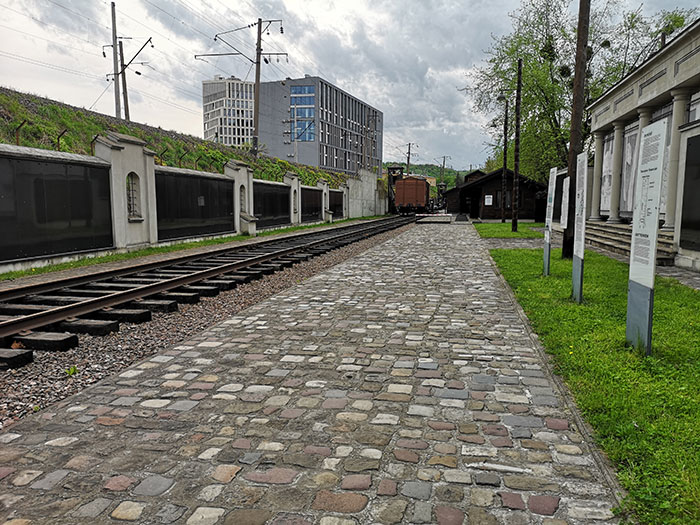
Territory of Terror is a memorial and museum, complete with barracks and watchtowers on the site of a former Jewish ghetto and prison. The entry fee is very cheap, about ~£1, and the display boards are in English too. The museum is also called the Memorial Museum of Totalitarian Regimes, and, as the name suggests, is dedicated to both the Nazis and the soviets regimes.
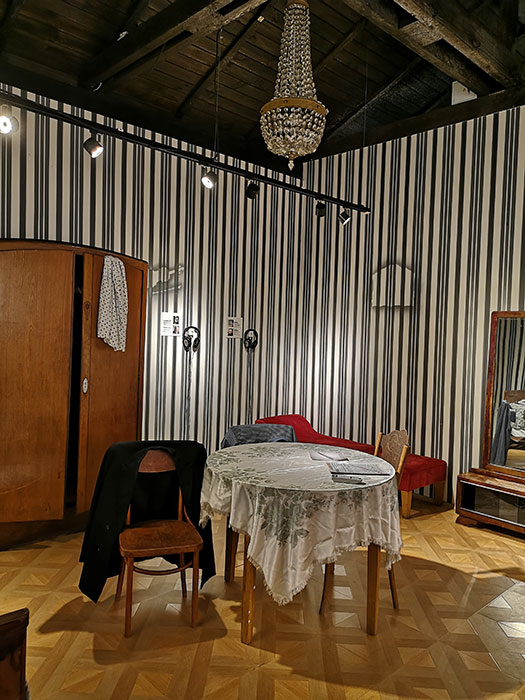
There are a few rooms to begin with, beautifully made and very poignant. On the walls there are items missing, sold because the families needed money as they were unable to work.

The barrack was the most impressive room in the whole museum. There are a couple of small windows with barb wire. Because of its location near the railway and due to the fact that the room is lower, only the bottom part of the passing trains can be seen. This means that while visitors are on site it is possible to hear trains passing by, which makes the experience so much more realistic. It was heartbreaking and chilling to hear the train and see it through the window. In the picture below I shared a collage with the train as it was seen through the window.
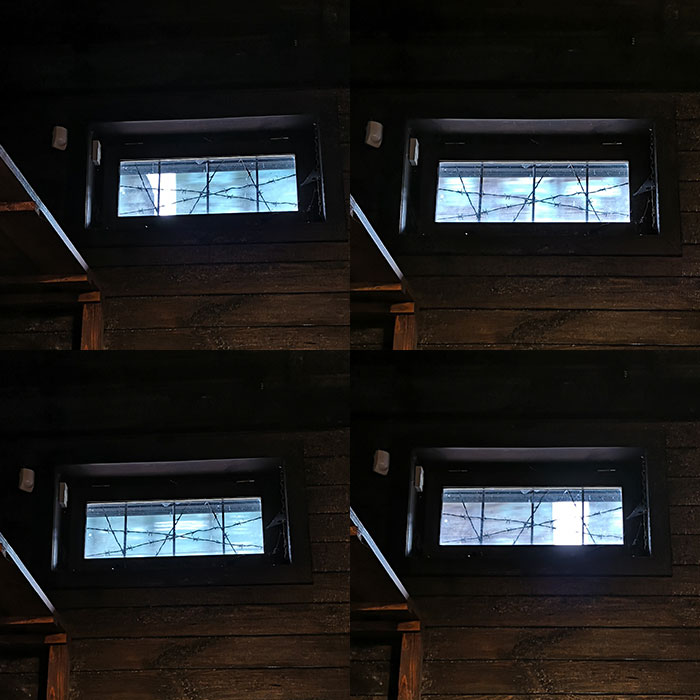
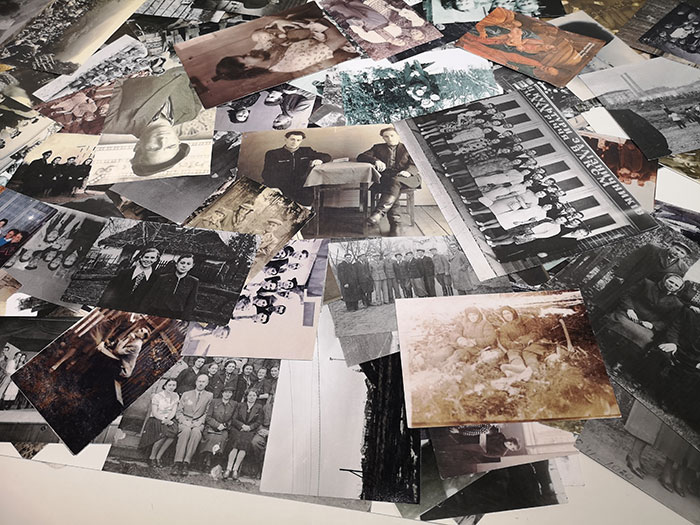
There was a table with pictures, that people could just take and look at, put back in another place, browse through them. There were no stories, just snippets of life. There were some stories recorded and displayed, in the previous rooms.

The watch tower was chilling to see. Behind it you can see another train passing. There are a lot of trains in Lviv because it is a large city, so a few trains might pass while you are in the museum.

The cattle train was unexpected not because it showed how it lookod for the ones who were deported, but because the display showed the deportations which happened after WWII ended, when soviets continued to displace people from their homes, well into the 1950s.

Ex-soviet monuments were reclaimed by them and placed in this courtyard at the back of the museum. Most of these were collected in 2019. Questioning the past as it was told for decades and the relation Ukraine had with russia changed after the invasion of 2014. I love how great the display board was, explaining that art was instrumentalized for propaganda and ideology. A yard in the Territory of Terror museum is the perfect place to store/showcase these relics of a violent past.
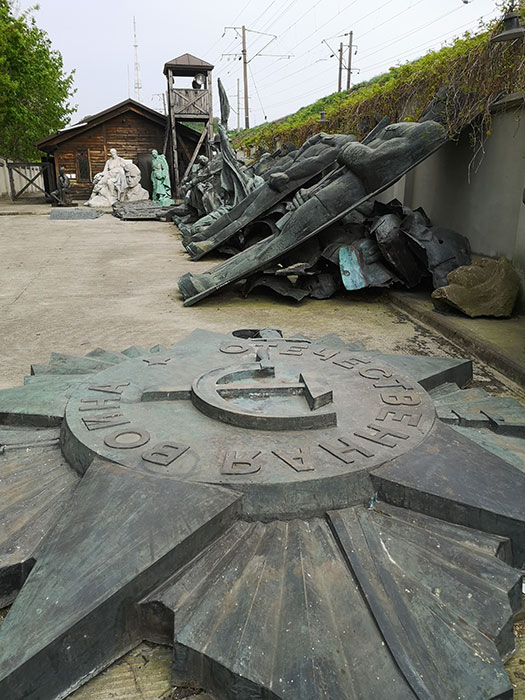
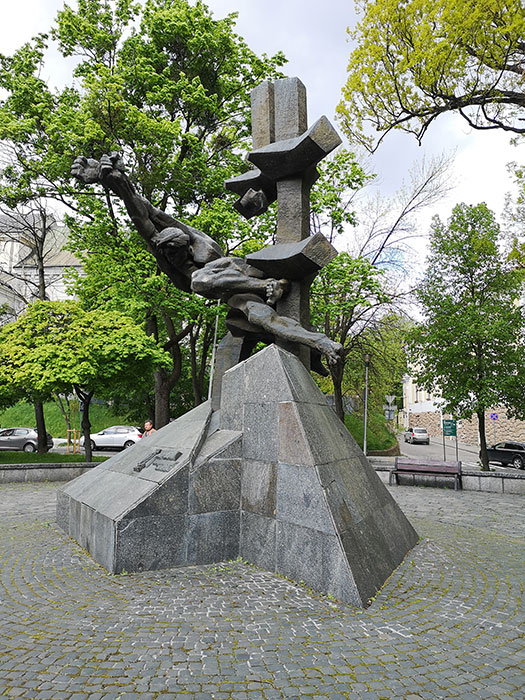
This gorgeous statue is placed in front of the second place I am talking about today, Lonsky Prison Museum.

This is the entrance to the Lonsky Prison Museum. In this museum visitors can see the history of Lviv under Nazi and soviet occupations. It was used as a prison until the mid-1990s.
When we visited a man in police uniform greeted us. Initially we were unsure if we got into the right place, but we were. In the same building is the City police department, but we didn’t know that before visiting. He was very friendly and spoke in English very good. I can’t remember if we paid a fee for the ticket, but if we did it was cheap.
In the interwar period this was used by Poles who were occupying this part of Ukraine. It was used for political prisoners. From 1939 to 1941 it was the first soviet occupation, it was used by the NKVD (pre-KGB). After the Nazis declared war on their allies, USSR, this prison was under the control of the Gestapo, from 1941 until 1944. During the second soviet occupation, 1944-1991, it was a prison used by the KGB (and previous acronyms).
Today it is where the Security Services archives are kept.

The corridor leading towards the prison cells. The first room was big, where there was a table with the visitor book for people to leave their thoughts. I took a picture of it and I was surprised by how many people left messages there in a short period. Most, if not all, of the messages were in Ukrainian (maybe some were in russian as well), but I did not see in other languages. This place is for Ukrainians, as there is a translated booklet for visitors, but all the display board do not have an English translation. Fear not, the place is so clear what it was used for, that there is no need for long descriptions.
In this prison the nationalists were kept, by the soviets and by the Gestapo. On 23 June 1941 (the following day after the Nazis declared war on USSR), the soviet NKVD executed 4,000 people in 6 days. They killed Ukrainians, Poles, Jews, even prisoners scheduled to be released.
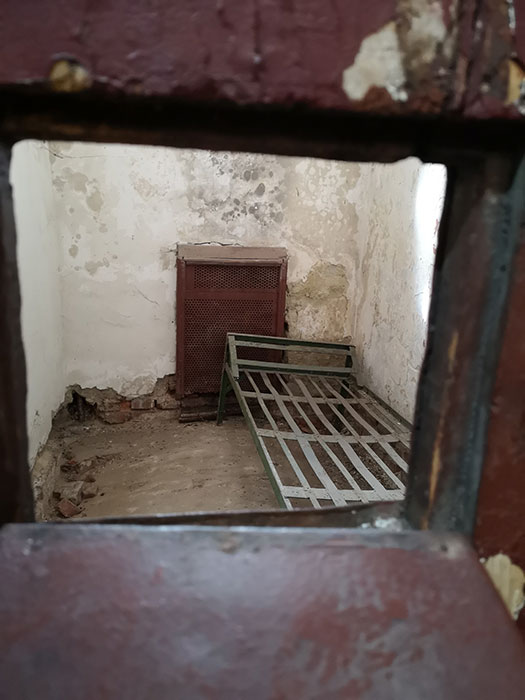
a jail room, small and nasty. The rooms and corridors are all kept in their original condition, from the lock-bolts to the windows and the sinks.

Newspapers, showing people executed on the site. There was a door in the first room from where people were taken into an enclosed garden and executed. On the day we went the door was closed. I am not sure if the garden is open for the visitors to see.
What I loved about the newspaper articles and the news reel seen below is that it is not censored. It shouldn’t be as this is the reality and it is not the kind of place one would take a small child which might not understand what they are seeing.
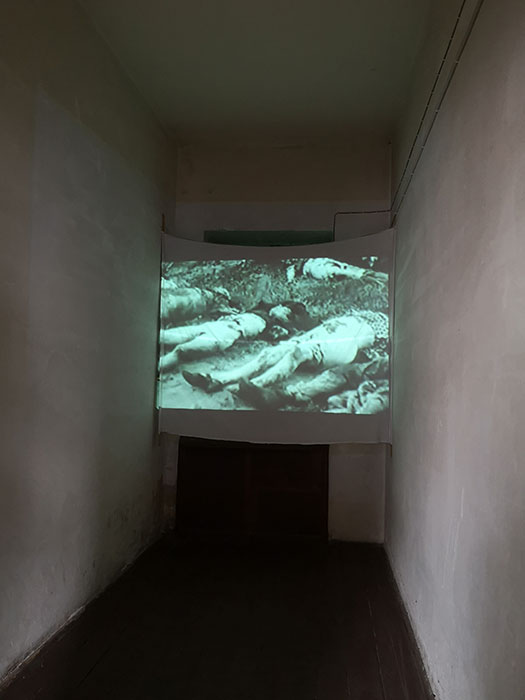
Women and men were executed at this site.

I highly recommend both museums to a wide range of people, to those who want to understand Ukraine, to those who want to understand Eastern Europe, or occupation, or the soviet-communist system, or are themselves either historians or curators. Both are dealing wonderfully with the very dark past and difficult issues to talk about, but which should be known.

